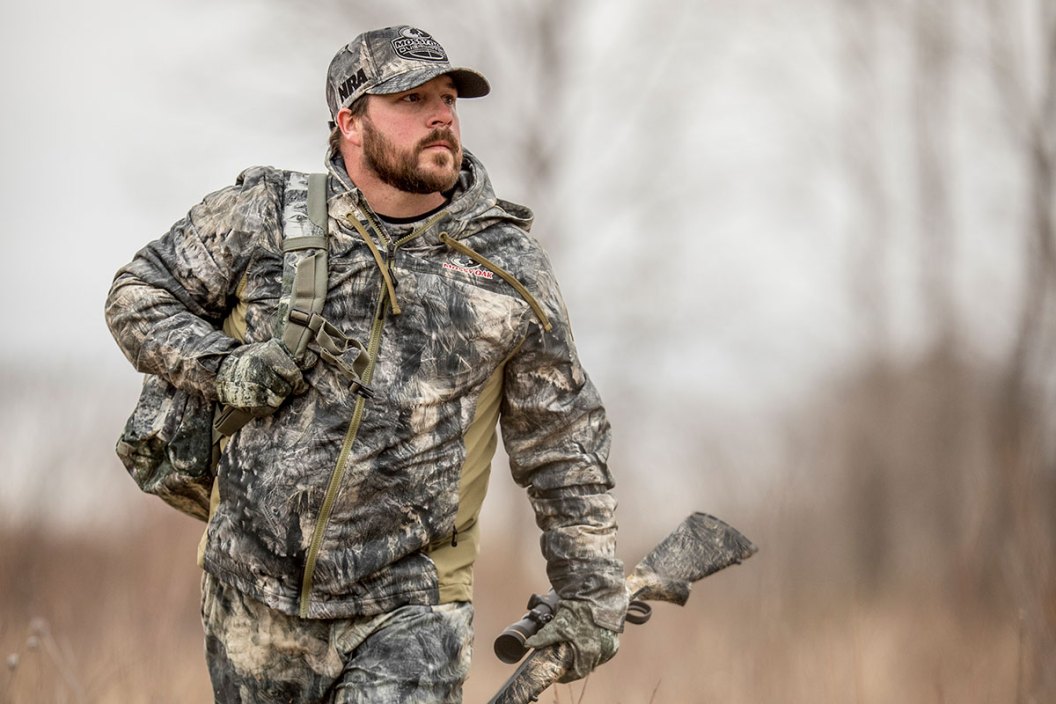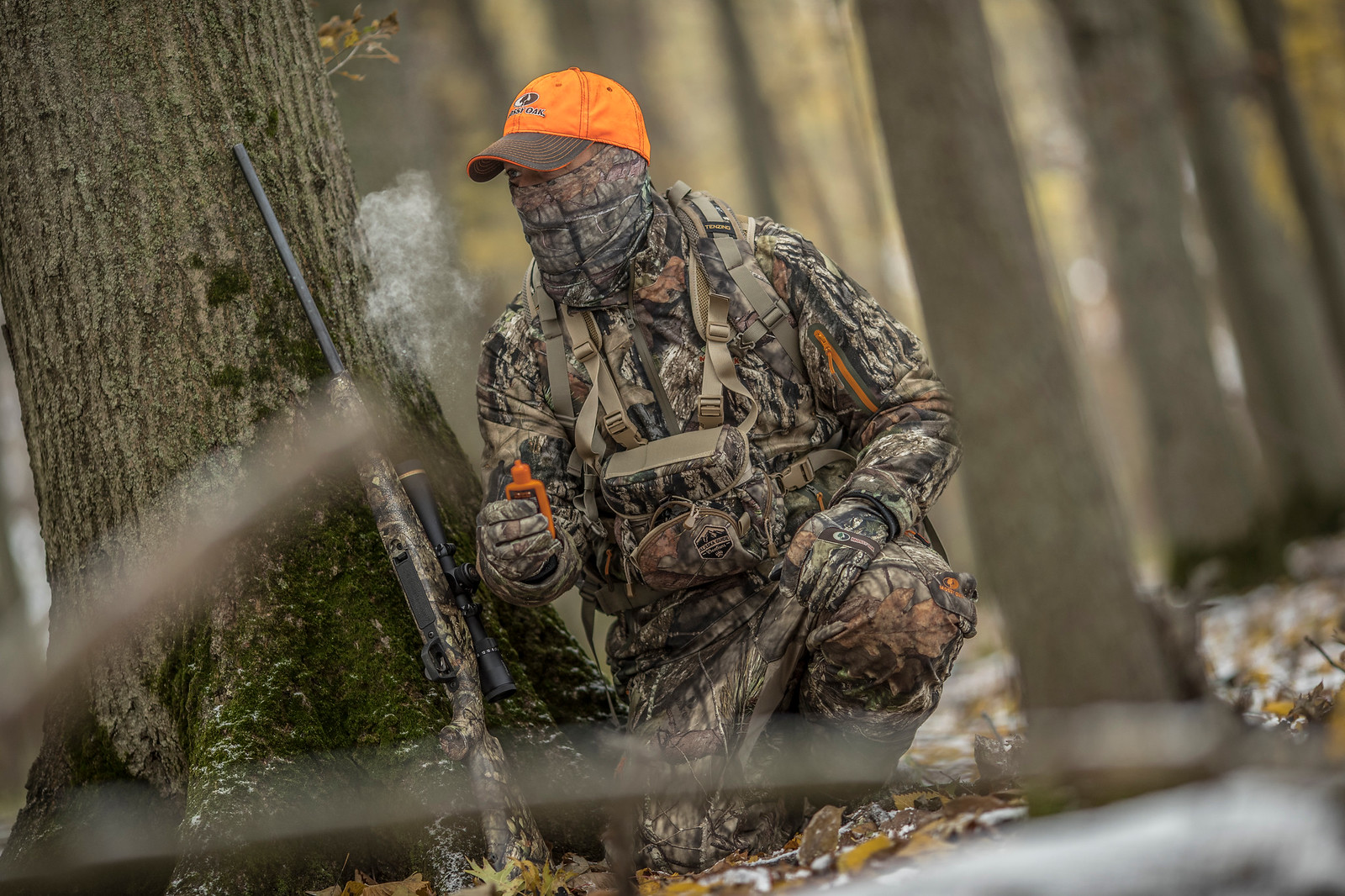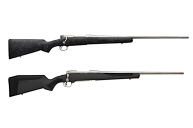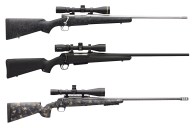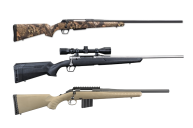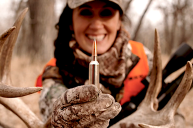Folks preparing for their first deer season in the woods have some choices to make, beginning with a rifle and chambering. A lot of hunters don't give too much thought to deer hunting rifle recoil. After all, in the field, they usually take one shot at a time, or the most, three. You can tolerate almost anything for one or two shots.
Still, that mindset ignores something essential—you must practice a lot to get good with a hunting rifle and ammo combo. And if your deer rifle kicks like a mule, the last thing you want to do is put a lot of rounds downrange. Suppose you force yourself to do it anyway. In that case, you can develop bad habits like flinching in anticipation of a walloping kick.
We'll balance seeking out a gun and caliber with minimal recoil and ensuring it can down a deer efficiently and consistently.
Gun Recoil is Relative
New deer hunters must understand right off the bat that felt recoil is mainly subjective. Indeed, some cartridges produce more actual recoil than others—no one will argue that a .300 Win Mag doesn't have more recoil than a .223 Remington. But regarding how much kick the shooter feels, aka felt recoil, several factors come into play.
First is the size of the hunter. Generally, larger, heavier people can soak up more energy from firing a rifle than those who are smaller and lighter. However, they still feel that recoil energy, so it's not a given that a larger person will shoot a hard-kicking rifle well. It just won't knock them back on their heels as much. They might feel more stable shooting it because they have more mass to get behind the gun.
Generally, a cartridge with a low bullet weight requires a smaller amount of propellant to get that bullet to travel at an acceptable velocity, which means less recoil. Heavier, large-caliber shots need a more significant charge to get that big bullet moving fast, so they kick more. However, the mass of the gun firing that bullet can soak up recoil before it ever gets to the shooter's shoulder.
The weight of the gun matters, too. A cartridge fired from a heavy rifle will impart less felt recoil to the shooter than the same cartridge fired from a lightweight gun. The individual hunter has to decide what's too heavy for their particular deer hunting style and how much recoil is too much for them.
Also, a semi-auto rifle will generally produce less felt recoil than a bolt-action, lever-action, or break-action gun. This fact is because some of the gas and energy from each cartridge is being siphoned off and redirected to cycle the firearm.
This is why intermediate cartridges, like the 6.5 Creedmoor, have become so popular. The 6.5 CM, for example, offers comparatively low recoil while also possessing a high ballistic coefficient (simply, it cuts through the air more easily). That sets the trend for flat shooting and long-range accuracy in a medium-to-lightweight rifle.
While there is some debate in the hunting community over whether or not the 6.5 Creedmoor is significant enough for some big game, it is more than adequate for medium game.
Comparatively, a medium-weight deer rifle chambered in .308 Winchester has a bit more kick but a similar effective range and objectively mild recoil. However, it's not as flat-shooting.
Fight Gun Recoil with Practice

Getty: zorandimzr
The form is another significant factor in the effects of recoil. Suppose a hunter is firing from a poorly developed shooting stance or position. In that case, they can feel recoil more acutely—sometimes, it can cause injury to the back or shoulder from shooting out of place. In a semi-auto rifle, this can potentially cause cycling problems.
Hunters should attempt to get as much of their body mass directly behind the rifle as possible and practice shooting from all positions at the range with their deer guns.
With proper form, proven deer cartridges with moderate recoil like the 6.5 Creedmoor, 6.5 Grendel, .308 Winchester, .30-06, .257 Roberts, 7mm-08 Remington, and the venerable .30-30 are very manageable for most hunters, even in lightweight rifles.
Location Affects Recoil
Suppose you hunt mule deer on the open plains. Try a heavier bolt-action rifle (like rifles used by long-range target shooters) since you will take most shots from a tripod, bipod, or shooting stick. Stability is more important than how heavy the gun is on the sling. Less kick also means faster follow-up shots, which occur more frequently when hunting in wide-open spaces.
If someone is chasing whitetails in thick brush or mountainous terrain where a long shot would be 100 yards, a lighter rifle is worth a more brutal kick.
Why? When the whole hunt is uphill, ounces are pounds, and pounds are a pain. For many, a compact and easy-to-carry lever-action rifle or ultralight bolt gun is the perfect firearm for this kind of hunting.
When combined with modern ammo, like Hornady's LeverEvolution cartridges topped with cutting-edge hunting bullets, the accuracy of a lever-action carbine can be surprising.
Even with more traditional ammo, plenty of deer has fallen over the decades to a .30-30 or .45-70 lever gun. But you don't have to endure the pain of using an ultralight deer hunting setup.
Cutting Down Recoil

Getty: M. Leonard Photography
Say you are committed to a lightweight brush gun or find a rifle and ammo combination that you shoot well, but it's just beating the crap out of you. There are things you can do to cut down on the pain.
You can add a compensator or muzzle brake at the muzzle, which redirects the gas from a cartridge to the sides and up as the bullet leaves the barrel to reduce felt recoil and fight muzzle rise.
The downside is that it makes every shot considerably louder for the shooter, making muzzle flashes brighter and more prominent. This can suck if you don't hunt with quality ear protection, and the people in the stalls next to you at the range will hate you.
Speaking of the range, if you're practicing with a hard-kicking rifle, there's no shame in wearing a recoil pad, sometimes called a shooting pad. Some deer hunters even wear them in the field or wear outerwear with a recoil pad. This will allow you to focus on shot placement and prevent you from developing a flinch, which can be hard to shake and detrimental to first-shot accuracy.
For something more a part of the gun, try a significant recoil-absorbing butt pad like those made by Limbsaver. These can make a huge difference in a gun's shootability and the shooter's comfort, plus they are equally functional at the range and in the deer woods.
This article was originally published on January 22, 2021.
READ MORE: THE BEST RIFLE CALIBER FOR DEER HUNTING: HOW DO YOU DECIDE?
